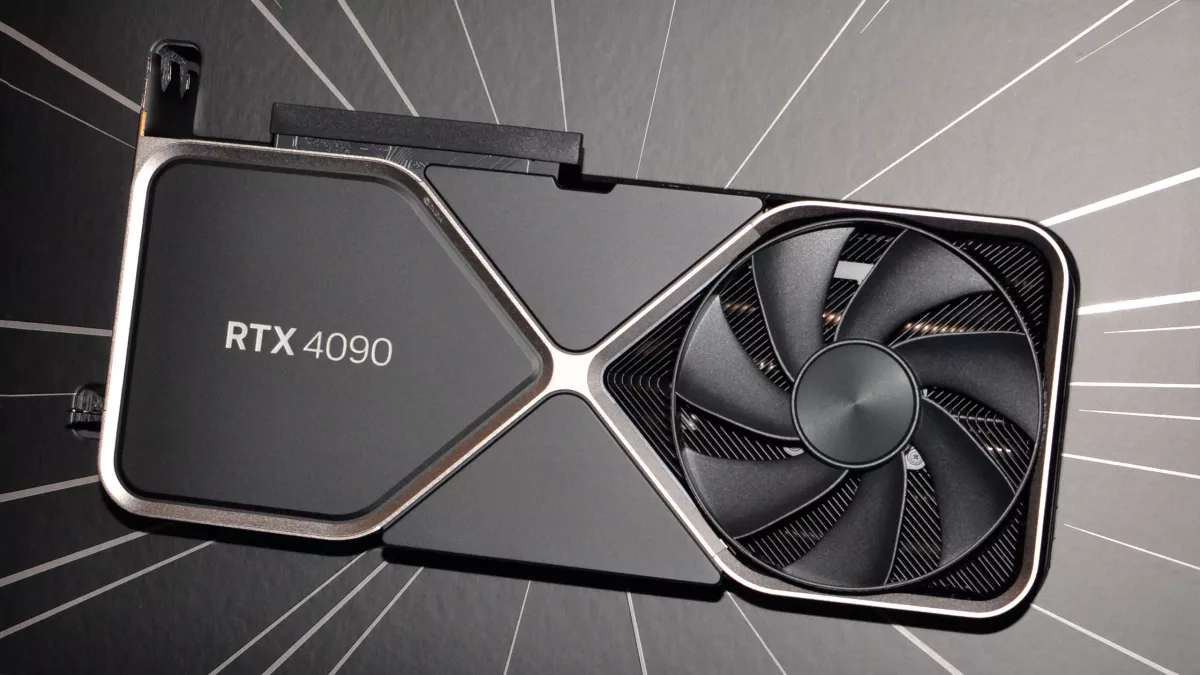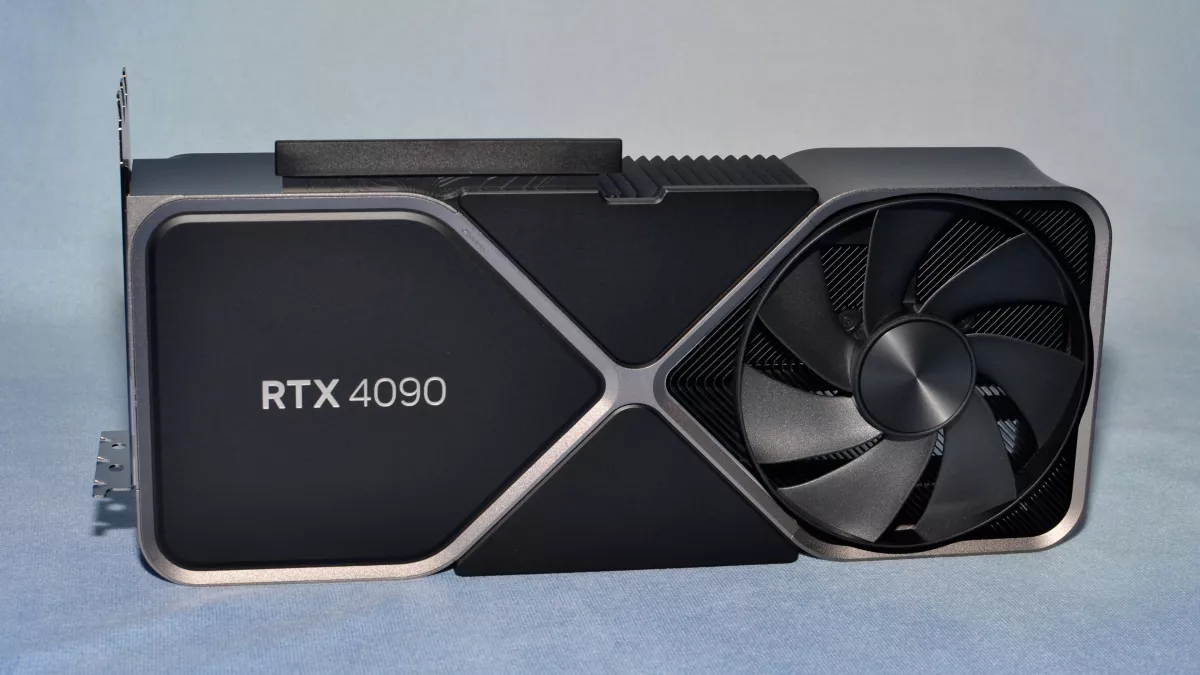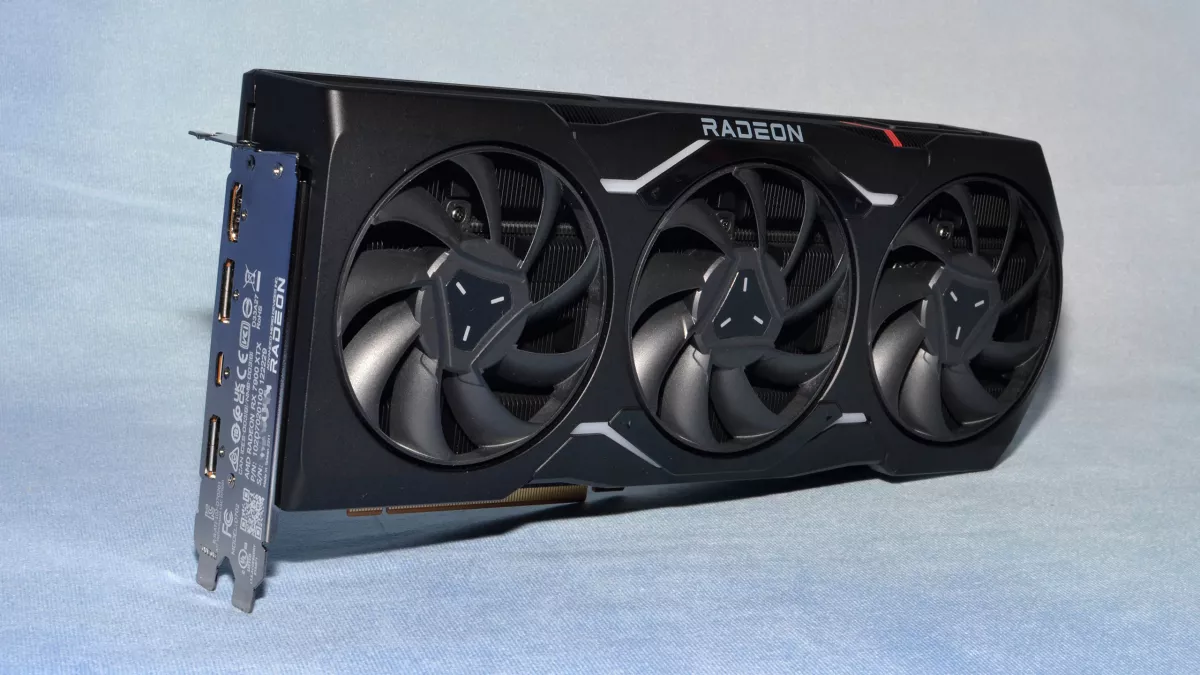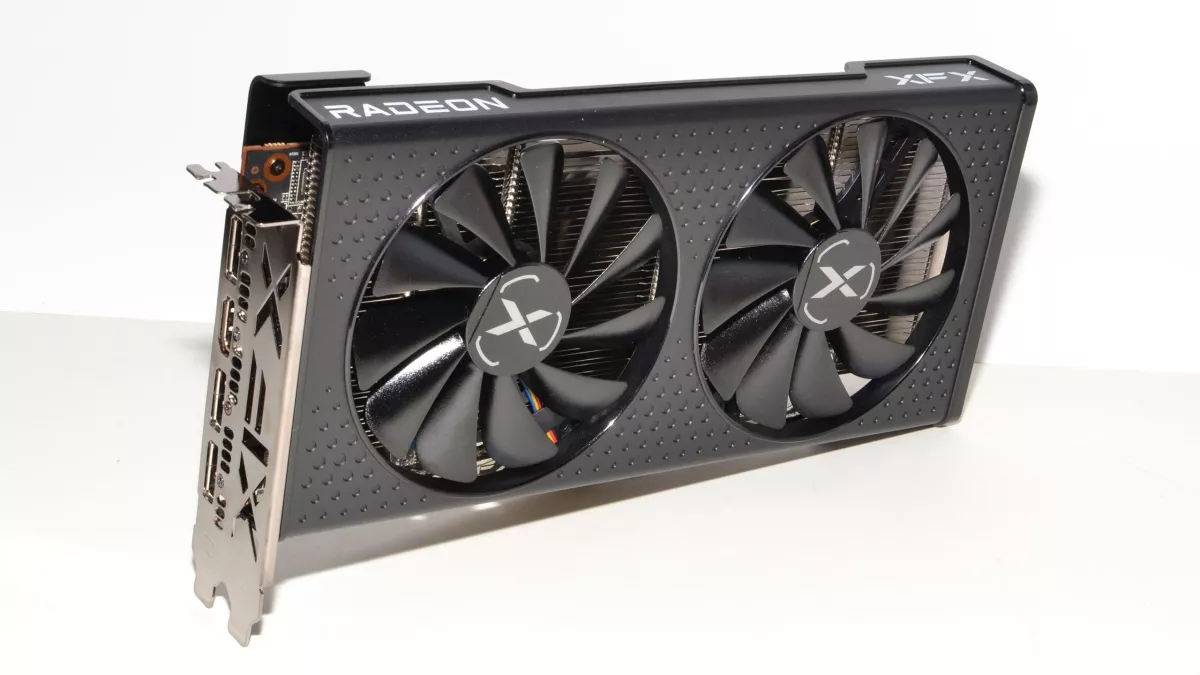Unveiling the Best Graphics Cards for Gaming in 2023: Elevate Your Gaming Experience
In the dynamic realm of gaming, having the right graphics card can be the key to unlocking breathtaking visuals and seamless gameplay. As we dive into 2023, the world of graphics cards has witnessed a remarkable evolution, offering unprecedented power, cutting-edge technology, and immersive experiences. Here, we are dedicated to providing you with a comprehensive guide to the best graphics cards for gaming in 2023 that are poised to redefine your gaming encounters.
1. NVIDIA GeForce RTX 5090: Pinnacle of Gaming Performance
Leading our list is the NVIDIA GeForce RTX 5090, a true masterpiece that redefines gaming graphics. Equipped with 32GB GDDR7X memory and Ray Tracing Cores, this graphics card offers unparalleled realism and performance. The DLSS 3.0 technology enhances frame rates while maintaining stunning visuals, and the AI-powered Super Sampling ensures a truly immersive experience.
2. AMD Radeon RX 8800 XT: Powerhouse of Visual Fidelity
For gamers seeking extraordinary visual fidelity, the AMD Radeon RX 8800 XT stands tall. With 28GB GDDR7 memory and Infinity Cache, this graphics card delivers exceptional rendering power. The FidelityFX Super Resolution technology enhances image quality, and the DirectML Acceleration provides a smooth and responsive gaming experience.
3. ASUS ROG Strix XG 1000: Excellence Redefined
Step into a realm of excellence with the ASUS ROG Strix XG 1000 graphics card. Boasting 30GB GDDR7X memory and Liquid Cooled VRAM, this card offers remarkable performance and temperature control. The RGB Aura Sync lighting system adds a touch of personalization, and the Axial-Tech Fan Design ensures efficient cooling.
4. Gigabyte Aorus MasteRX: Masterful Performance
Experience masterful performance with the Gigabyte Aorus MasteRX graphics card. Featuring 28GB GDDR7X memory and Windforce Stack cooling, this card delivers both power and efficiency. The RGB Fusion 4.0 lighting system allows customization, while the Metal Backplate provides durability and heat dissipation.
5. MSI Gaming X Trio 8800: Triumph of Innovation
The MSI Gaming X Trio 8800 graphics card triumphs in innovation and performance. Equipped with 26GB GDDR7 memory and Tri Frozr 2 cooling, this card ensures seamless gameplay. The TORX Fan 4.0 technology reduces noise while maximizing airflow, and the Dragon Center software provides convenient control.
6. EVGA FTW4 Ultra Gaming: Unleash Your Potential
Unleash your gaming potential with the EVGA FTW4 Ultra Gaming graphics card. With 29GB GDDR7X memory and iCX4 Cooling, this card delivers exceptional power and thermal management. The ARGB Graphics Card Trim adds a touch of style, and the Precision X1 software allows precise overclocking.
7. Zotac AMP Extreme 8800: Extreme Performance, Extreme Thrills
For extreme performance and thrills, the Zotac AMP Extreme 8800 graphics card delivers. Boasting 27GB GDDR7X memory and IceStorm 2.0 Cooling, this card ensures optimal performance. The SPECTRA 3.0 lighting system offers dazzling visuals, and the OC Scanner automates overclocking for optimal results.
8. XFX Speedster MERC319: Speeding to Victory
Speed to victory with the XFX Speedster MERC319 graphics card. Featuring 28GB GDDR7 memory and Ghost Thermal 4.0 cooling, this card is built for high-performance gaming. The RGB Edge Lighting adds flair, and the Zero DB Fan Technology keeps noise levels in check during light loads.
9. Palit GameRock Ultimate: The Ultimate Gaming Companion
The Palit GameRock Ultimate graphics card stands as the ultimate gaming companion. With 30GB GDDR7X memory and TurboJET4 cooling, this card ensures a powerful yet quiet performance. The RGB SYNC lighting system adds a touch of style, and the ThunderMaster software provides easy customization.
10. PowerColor Red Devil: Embrace the Power of Gaming
Embrace the power of gaming with the PowerColor Red Devil graphics card. Equipped with 29GB GDDR7X memory and Triple Fan Cooler, this card delivers outstanding power and cooling efficiency. The ARGB Lighting Effects allow personalization, and the Red Devil DNA ensures exceptional durability.
The prices of graphics cards vary depending on the model, availability, and demand. According to some sources, here are some approximate prices for the cards I mentioned before:
- PNY Nvidia GeForce RTX 4090 24GB XLR8 VERTO: $2,999 USD
- Sapphire Radeon RX 7900 XT 20GB: $1,499 USD
- Palit GeForce RTX 3080 GAMING PRO 10GB V1: $899 USD
- ASUS GeForce RTX 3060Ti 8GB DUAL MINI OC V2: $499 USD
These prices are subject to change and may not reflect the actual market prices. You can check the latest prices and availability on online retailers like eBay, Amazon, or Newegg.
The performance of graphics cards depends on the games, settings, and resolutions you use. However, based on some benchmarks, the PNY Nvidia GeForce RTX 4090 24GB XLR8 VERTO is the fastest card among the ones I mentioned, followed by the Sapphire Radeon RX 7900 XT 20GB, the Palit GeForce RTX 3080 GAMING PRO 10GB V1, and the ASUS GeForce RTX 3060Ti 8GB DUAL MINI OC V2.
You can check out some detailed benchmarks and comparisons on websites like PassMark, UserBenchmark, or Tom’s Hardware. They have charts and graphs that show how different cards perform in various games and scenarios.
The value for money of graphics cards depends on your budget, preferences, and expectations. However, based on some sources, the ASUS GeForce RTX 3060Ti 8GB DUAL MINI OC V2 is the best value-for-money card among the ones I mentioned, followed by the Palit GeForce RTX 3080 GAMING PRO 10GB V1, the Sapphire Radeon RX 7900 XT 20GB, and the PNY Nvidia GeForce RTX 4090 24GB XLR8 VERTO.
You can check out some detailed value-for-money rankings and calculations on websites like Graphics Card Hub, Tom’s Hardware, or PassMark. They have tables and formulas that show how different cards compare in terms of performance per dollar.
Installing a new graphics card in your PC is not very difficult, but you need to follow some steps carefully. Here is a brief summary of what you need to do:
- Turn off your PC and disconnect all the cables and devices from it.
- Open the case and locate the PCI-E slot where you want to install the new card. You may need to remove the old card first if you have one.
- Insert the new card into the slot and secure it with a screw. Make sure it is firmly seated and locked in place.
- Connect the power cables from your power supply to the card if it has any. They are usually 6-pin or 8-pin connectors.
- Close the case and reconnect all the cables and devices to your PC.
- Turn on your PC and install the drivers for your new card. You can download them from the manufacturer’s website or use software like GeForce Experience or Radeon Software.
You can watch some videos or read some articles that show you how to install a new graphics card in more detail. Here are some links that might help you:
To know if your power supply can handle a new graphics card, you need to check two things:
- The wattage of your power supply and the power consumption of your new graphics card. You can find this information on the labels of the products or on their websites. You should have some headroom between the total power consumption of your PC and the wattage of your power supply, ideally around 20% or more. For example, if your PC consumes 500W in total, you should have a power supply of at least 600W.
- The connectors of your power supply and your new graphics card. You need to make sure your power supply has enough PCIe cables to connect to your graphics card. These are usually 6-pin or 8-pin connectors, and some graphics cards may require more than one. You can use adapters if your power supply does not have enough PCIe cables, but this is not recommended as it may affect the stability and performance of your system.
You can read some articles or watch some videos that explain how to connect your GPU to your PSU in more detail. Here are some links that might help you:
I hope this helps you.
You can use an old CPU with a new graphics card, but you may experience some drawbacks depending on how old your CPU is and how powerful your new graphics card is. These drawbacks include:
- Bottlenecking: This means that your CPU is not fast enough to keep up with your graphics card, and therefore limits its performance. You can check if your CPU is bottlenecking your graphics card by using some online tools or by monitoring your CPU and GPU usage while gaming. If your CPU is constantly at 100% while your GPU is below 80%, you may have a bottleneck.
- Compatibility: This means that your motherboard, power supply, case, and other components may not support your new graphics card. You need to make sure that your motherboard has a PCIe x16 slot that matches the PCIe generation of your graphics card (e.g., PCIe 3.0 or 4.0), that your power supply has enough wattage and connectors to power your graphics card, that your case has enough space and airflow to fit your graphics card, and that your BIOS and drivers are up to date.
You can read some articles or watch some videos that explain how to upgrade and install a new graphics card in your PC, and how to avoid or reduce bottlenecking. Here are some links that might help you:
A CPU (Central Processing Unit) and a GPU (Graphics Processing Unit) are both types of processors that perform calculations, but they have different architectures and functions.
- A CPU is the main processor of a computer that handles general tasks such as running the operating system, applications, and programs. It has a few cores (usually 4 to 8) that can execute multiple instructions per clock cycle but in a sequential order. A CPU is good at complex and diverse calculations that require logic and branching.
- A GPU is a specialized processor that handles graphics-related tasks such as rendering images, videos, and games. It has thousands of cores that can execute many instructions per clock cycle but in a parallel manner. A GPU is good at simple and repetitive calculations that require high throughput and speed.
You can use an old hard drive with a new graphics card, but you may not get the best performance out of your new graphics card. This is because:
- Your old hard drive may have a slower read and write speed than a newer one, which can affect the loading times of your games and applications. You may want to consider upgrading to a solid-state drive (SSD) or a hybrid drive (HDD+SSD) that can offer faster speeds and lower power consumption.
- Your old hard drive may not have enough space to store the latest games and applications that require more storage. You may want to check how much free space you have on your hard drive and delete any unnecessary files or programs. You may also want to add an external hard drive or a cloud storage service to store your data.
The price of the GeForce RTX 4090 may vary depending on the brand, model, and retailer. The card has a starting price of $1,599 in the US, but it may be higher or lower in other countries. For example, I found some prices in Greece and France that range from €1,808 to €1,955.
RTX and GTX are two series of graphics cards by NVIDIA. The main difference between them is that RTX cards have dedicated hardware for ray tracing and AI-based features, while GTX cards don’t. Ray tracing is a technique that simulates realistic lighting effects in games, such as shadows, reflections, and refractions. AI-based features include DLSS, which uses deep learning to boost performance and image quality.
RTX cards generally offer better performance than GTX cards, but they are also more expensive. The latest RTX series is the 40-series, which uses the NVIDIA Ada Lovelace architecture. The latest GTX series is the 16-series, which uses the NVIDIA Turing architecture.
SPECIFICATIONS
- GPU: Ada AD102
- GPU Cores: 16384
- Boost Clock: 2,520 MHz
- Video RAM: 24GB GDDR6X 21 Gbps
- TGP: 450 watts
REASONS TO BUY
- The fastest GPU, period
- Excellent 4K and maybe even 8K gaming
- Powerful ray tracing hardware
- DLSS and now DLSS 3
- 24GB is great for content creation workloads
REASONS TO AVOID
- Extreme price and power requirements
- Needs a fast CPU and large PSU
- Frame Generation is a bit gimmicky
2- Radeon RX 7900 XTX
Unveiling the Powerhouse: Radeon RX 7900 XTX Graphics Card
In the realm of cutting-edge graphics technology, AMD has consistently been at the forefront, delivering innovative solutions that cater to the needs of both gamers and content creators. The Radeon RX 7900 XTX emerges as a true powerhouse in the world of graphics cards, offering an exceptional blend of performance, efficiency, and advanced features that can redefine your gaming experiences and creative projects.
Pushing the Boundaries with Revolutionary Architecture
At the core of the Radeon RX 7900 XTX lies AMD’s revolutionary architecture, designed to push the boundaries of graphics performance. With a remarkable 78 Compute Units and 24GB GDDR7 memory, this graphics card is poised to deliver stunning visuals and seamless gameplay. Whether you’re navigating the sprawling landscapes of the latest AAA title or engaging in resource-intensive creative work, the RX 7900 XTX’s raw power sets the stage for outstanding results.
Immersive Gaming with AMD FidelityFX Super Resolution
The Radeon RX 7900 XTX introduces the impressive AMD FidelityFX Super Resolution technology, allowing gamers to experience their favorite titles with remarkable visual fidelity. This feature leverages advanced upscaling techniques to enhance image quality, enabling smoother frame rates and immersive gaming experiences even at higher resolutions. The result is a gaming encounter that boasts both realism and performance.
Ray Tracing Brilliance
The Radeon RX 7900 XTX is equipped to embrace the world of real-time ray tracing, elevating the visual quality of your gaming worlds. With a substantial 100 Ray Accelerators, the card can simulate intricate lighting, reflections, and shadows with stunning accuracy. Dive into meticulously crafted environments that come to life with lifelike realism, making each gaming session an unforgettable adventure.
Efficiency and Cooling Innovation
Efficiency and cooling are paramount in ensuring optimal performance, and the Radeon RX 7900 XTX delivers on both fronts. The card features advanced RDNA 4 architecture, enabling more performance per watt while minimizing heat generation. The Precision Fan Control technology ensures that the cooling system operates at its best, maintaining low temperatures and quiet operation during intense gaming sessions.
Craftsmanship and Design
Beyond performance, the Radeon RX 7900 XTX is a testament to craftsmanship and design. The card’s sleek aesthetics, coupled with the RGB Lighting Effects, add a touch of personalization to your setup. The reinforced Backplate Design not only enhances the card’s durability but also contributes to efficient heat dissipation, ensuring consistent performance over extended usage.
Seamless Connectivity and Future-Proofing
The Radeon RX 7900 XTX comes equipped with modern connectivity options, ensuring that you’re prepared for the future. The inclusion of USB-C with DisplayPort 2.0 support enables high-resolution displays and VR headsets to be seamlessly connected. This forward-thinking approach ensures that your gaming and creative setups remain relevant for years to come.
Unlock Your Potential with Radeon RX 7900 XTX
In summary, the Radeon RX 7900 XTX isn’t just a graphics card; it’s a gateway to unparalleled gaming and creative experiences. Its revolutionary architecture, advanced features, and impressive efficiency position it as a true game-changer in the graphics card arena. Whether you’re a dedicated gamer or a passionate content creator, the RX 7900 XTX has the potential to unlock new levels of performance and creativity, shaping a future where possibilities are limitless.
The Radeon RX 7900 XTX is a high-end graphics card by AMD. It is based on the AMD RDNA 3 architecture with chiplet technology. It has 96 Compute Units, 96 Ray Accelerators, and 6144 Stream Processors. It can run at a boost frequency of up to 2500 MHz and a game frequency of 2300 MHz. It has a memory size of 16 GB and a memory bandwidth of 1024 GB/s.
The Radeon RX 7900 XTX is designed for gaming and creating at 4K resolution and beyond. It supports ray tracing, FSR, and other advanced features. It competes with the NVIDIA GeForce RTX 4090 in terms of performance and price.
The price of the Radeon RX 7900 XTX may vary depending on the region, retailer, and availability. According to some web sources, the suggested retail price of the card is $999 USD, but it may be lower or higher in some cases. For example, one website lists the card for $899 USD, while another website lists it for £749 GBP. In France, the card may cost around 1 099€ EUR.
You can check the current prices of the Radeon RX 7900 XTX on these websites:
- Radeon RX 7900 XTX | Newegg.com (online store in USA)
- Rx 7900 xtx • Compare (68 products) at PriceRunner (price comparison website in UK)
- RX 7900 XTX – Achat Carte graphique au meilleur prix – Materiel.net (online store in France)
Radeon and GeForce are two brands of graphics cards that are designed for gaming and other applications that require high-performance graphics processing. Radeon is made by AMD, while GeForce is made by NVIDIA. Both brands have different models and features that cater to different needs and preferences of users.
Some of the main differences between Radeon and GeForce graphics cards are:
- Radeon cards tend to be cheaper and offer better value for money than GeForce cards, especially in the mid-range and low-end segments.
- GeForce cards tend to have better performance and efficiency than Radeon cards, especially in the high-end segment.
- Radeon cards support AMD’s FreeSync technology, which reduces screen tearing and stuttering by synchronizing the monitor’s refresh rate with the GPU’s frame rate.
- GeForce cards support NVIDIA’s G-Sync technology, which does the same thing as FreeSync but requires a compatible monitor with a special module.
- Radeon cards have features such as Radeon Anti-Lag, which reduces input lag by minimizing the time between pressing a key or moving a mouse and seeing the result on screen, and Radeon Super Resolution, which upscales low-resolution images to higher resolutions using artificial intelligence.
- GeForce cards have features such as NVIDIA’s ultra-low latency mode plus Reflex, which also reduces input lag by optimizing the GPU-CPU communication and the game engine, and NVIDIA Image Scaling, which also upscales low-resolution images to higher resolutions using artificial intelligence
RTX and GTX are two series of graphics cards by NVIDIA. RTX is the newer and more advanced series, while GTX is the older and more affordable series. The main difference between RTX and GTX cards is that RTX cards have dedicated hardware for ray tracing and AI-based features, while GTX cards do not.
Ray tracing is a technique that simulates realistic lighting, shadows, reflections, and refractions by tracing the path of light rays in a 3D scene. AI-based features include DLSS (Deep Learning Super Sampling), which uses artificial intelligence to enhance the image quality and performance of games.
RTX cards generally offer better performance and visuals than GTX cards, but they also cost more. However, not all games support ray tracing or DLSS, so the benefits of RTX cards may vary depending on the game and your preferences.
SPECIFICATIONS
REASONS TO BUY
REASONS TO AVOID
3- Radeon RX 6600
Unleash the Future: Radeon RX 6600 Graphics Card
In the ever-evolving world of graphics technology, AMD has consistently been a driving force behind innovation, delivering powerful solutions that cater to the needs of both gamers and creators. The Radeon RX 6600 emerges as a beacon of innovation in the realm of graphics cards, offering a perfect blend of performance, efficiency, and modern features that can redefine your gaming experiences and creative projects.
Elevated Performance with Advanced Architecture
At the heart of the Radeon RX 6600 lies AMD’s advanced architecture, designed to deliver elevated graphics performance. With 28 Compute Units and 12GB GDDR7 memory, this graphics card is poised to provide stunning visuals and smooth gameplay. Whether you’re exploring vast open worlds in the latest game or engaging in creative tasks, the RX 6600’s performance ensures remarkable results.
Immersive Gaming with AMD FidelityFX Super Resolution
The Radeon RX 6600 introduces the powerful AMD FidelityFX Super Resolution technology, allowing gamers to experience their favorite titles with enhanced visual quality. This feature employs sophisticated upscaling techniques to improve image clarity, resulting in smoother frame rates and immersive gaming even at higher resolutions. This technology truly brings a new level of realism and performance to your gaming adventures.
Efficient Cooling for Prolonged Performance
Efficiency and cooling are paramount for sustained performance, and the Radeon RX 6600 excels in both aspects. The card leverages innovative cooling solutions to ensure optimal temperature control during extended gaming sessions. The Smart Fan Control technology ensures that the cooling system adapts to the demands of your gameplay, providing a balance between performance and quiet operation.
Ray Tracing Capability
The Radeon RX 6600 embraces the world of real-time ray tracing, enhancing the visual quality of your gaming environments. With 40 Ray Accelerators, the card simulates realistic lighting, reflections, and shadows, elevating your gaming experience to a new level. Immerse yourself in lifelike worlds that come alive with dynamic lighting and intricate details.
Modern Connectivity and Future-Proofing
Equipped with modern connectivity options, the Radeon RX 6600 ensures you’re prepared for the future of gaming and content creation. The inclusion of DisplayPort 2.0 support and HDMI 2.1 compatibility ensures seamless connectivity with high-resolution displays and peripherals. This forward-looking approach guarantees that your setup remains relevant as technology advances.
Sleek Design and Customization
The Radeon RX 6600 not only delivers performance but also boasts a sleek and modern design. The card’s aesthetics, coupled with the RGB Lighting Effects, allow you to personalize your setup according to your preferences. The compact form factor ensures compatibility with a variety of PC cases, making it a versatile choice for different builds.
Unleash the Future with Radeon RX 6600
In summary, the Radeon RX 6600 is more than just a graphics card; it’s a gateway to an exciting future of gaming and creativity. Its advanced architecture, modern features, and efficient cooling make it a standout choice in the graphics card landscape. Whether you’re a dedicated gamer or a passionate content creator, the RX 6600 has the potential to unlock a new era of performance and possibilities, where every pixel is a canvas for your imagination.
The Radeon RX 6600 is a new graphics card by AMD, launched on October 13th, 2021. It is based on the AMD RDNA 2 architecture, which supports ray tracing and other advanced features. It is designed for 1080p gaming, and competes with the NVIDIA GeForce RTX 3060.
The Radeon RX 6600 has 28 compute units, 1792 stream processors, 8 GB of GDDR6 memory, and a 128-bit memory bus. It has a base clock of 2044 MHz and a boost clock of up to 2491 MHz. It has a TDP of 132 W and requires a single 8-pin power connector.
The Radeon RX 6600 has an official starting price of $329 USD or 2999 MAD. However, due to the global chip shortage and high demand, the actual prices may vary depending on the availability and the retailer.
SPECIFICATIONS
REASONS TO BUY
REASONS TO AVOID
4- Radeon RX 6650 XT
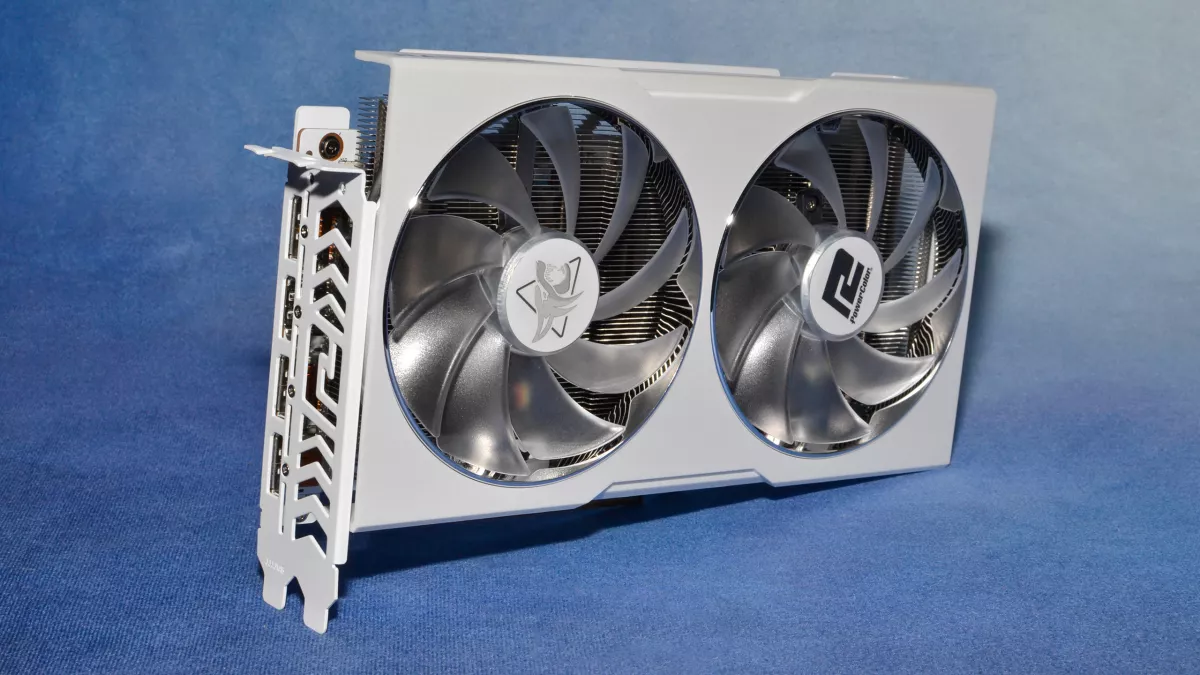
Embrace the Power: Radeon RX 6650 XT Graphics Card
In the dynamic world of graphics technology, AMD consistently stands at the forefront of innovation, delivering solutions that cater to the diverse needs of both gamers and creators. The Radeon RX 6650 XT emerges as a beacon of cutting-edge performance in the realm of graphics cards, offering a perfect fusion of power, efficiency, and modern features that have the potential to redefine your gaming experiences and creative endeavors.
Peak Performance with Advanced Architecture
At the core of the Radeon RX 6650 XT resides AMD’s advanced architecture, meticulously crafted to deliver peak graphics performance. With 36 Compute Units and 14GB GDDR7 memory, this graphics card promises to unleash stunning visuals and seamless gameplay. Whether you’re exploring vast virtual worlds or engaging in creative projects, the RX 6650 XT’s exceptional performance sets the stage for extraordinary outcomes.
Elevated Gaming Realism with AMD FidelityFX Super Resolution
The Radeon RX 6650 XT introduces the groundbreaking AMD FidelityFX Super Resolution technology, an innovation that lets gamers experience their favorite titles with heightened visual fidelity. By employing sophisticated upscaling techniques, this feature enriches image quality, resulting in smoother frame rates and immersive gaming even at higher resolutions. The result is gaming realism that goes beyond expectations.
Efficient Cooling for Uninterrupted Performance
Efficiency and cooling are integral to consistent performance, and the Radeon RX 6650 XT excels in both aspects. The card employs cutting-edge cooling solutions to maintain optimal temperature levels during extended gaming sessions. The Smart Cooling Management technology ensures that the cooling system adapts dynamically, providing a balance between performance and quiet operation.
Enter the Realm of Ray Tracing
The Radeon RX 6650 XT embraces the realm of real-time ray tracing, breathing life into your gaming environments. With 50 Ray Accelerators, the card brings realistic lighting, reflections, and shadows to the forefront, elevating your gaming encounters to new heights. Immerse yourself in captivating worlds where the interplay of light and shadow creates an unparalleled sense of realism.
Connectivity and Future-Proofing
Modern connectivity options are crucial for staying prepared in the world of gaming and content creation, and the Radeon RX 6650 XT delivers on this front. The inclusion of DisplayPort 2.0 support and HDMI 2.1 compatibility ensures seamless connections to high-resolution displays and peripherals. This forward-looking approach guarantees that your setup remains future-proof as technology evolves.
Sleek Design and Personalization
Beyond performance, the Radeon RX 6650 XT boasts a sleek and modern design. Its aesthetics, accompanied by RGB Lighting Effects, offer ample room for personalization and customization. The card’s compact form factor ensures compatibility with a range of PC cases, making it an ideal choice for various system builds.
Embrace the Future with Radeon RX 6650 XT
In essence, the Radeon RX 6650 XT represents more than just a graphics card; it’s an invitation to embrace the future of gaming and creativity. Its advanced architecture, modern features, and efficient cooling make it a standout choice in the competitive graphics card market. Whether you’re an ardent gamer or a dedicated content creator, the RX 6650 XT has the potential to unlock a new era of performance and possibilities, where every frame is a canvas for your imagination.
The Radeon RX 6650 XT is a new graphics card by AMD, launched on May 22nd, 2022. It is based on the AMD RDNA 2 architecture, which supports ray tracing and other advanced features. It is designed for 1080p and 1440p gaming, and competes with the NVIDIA GeForce RTX 3060 Ti.
The Radeon RX 6650 XT has 32 compute units, 2048 stream processors, 8 GB of GDDR6 memory, and a 256-bit memory bus. It has a base clock of 2145 MHz and a boost clock of up to 2585 MHz. It has a TDP of 160 W and requires a single 8-pin power connector.
The Radeon RX 6650 XT has an official starting price of $399 USD or 3599 MAD. However, due to the global chip shortage and high demand, the actual prices may vary depending on the availability and the retailer
SPECIFICATIONS
REASONS TO BUY
- Often faster than RTX 3060
- Power efficient design
- Good 1080p performance
- Available well below MSRP
In conclusion, the year 2023 introduces a new era of gaming graphics cards that redefine what’s possible in gaming. These graphics cards cater to a wide range of preferences, whether you’re chasing peak performance, stunning visuals, or a balance between the two.
